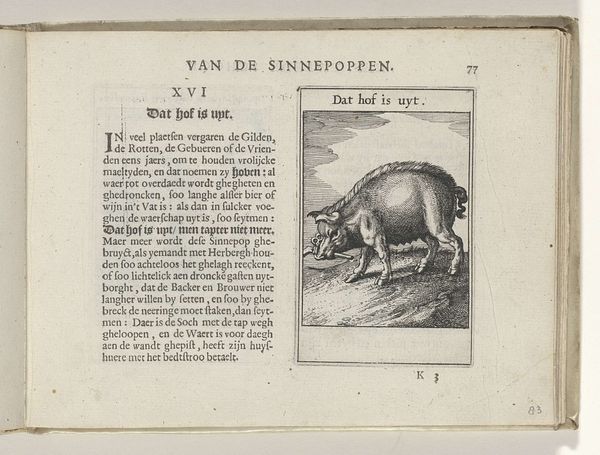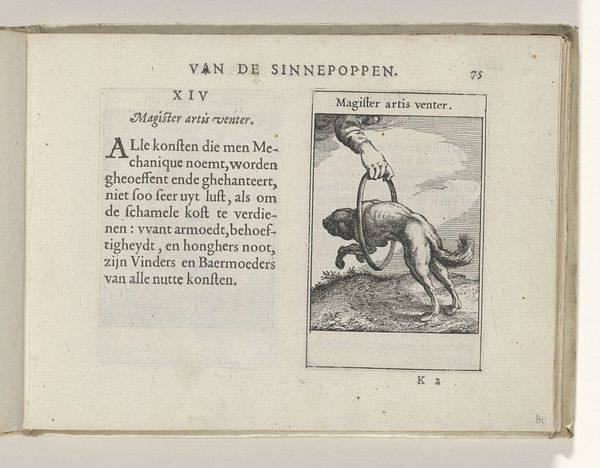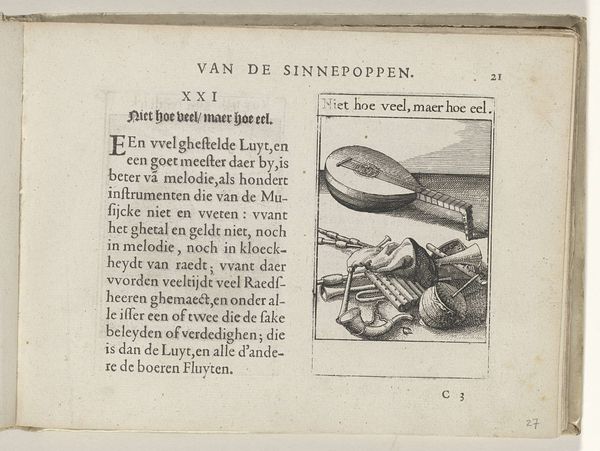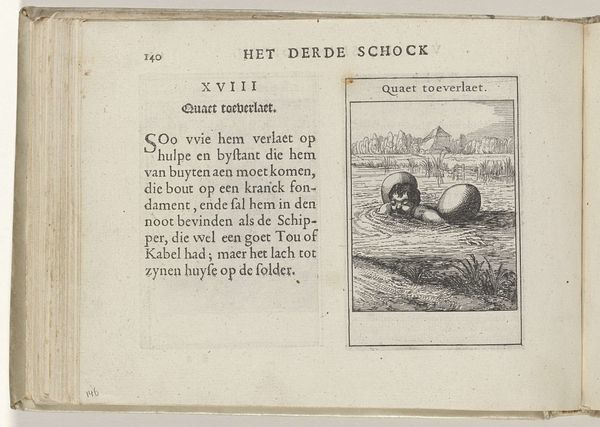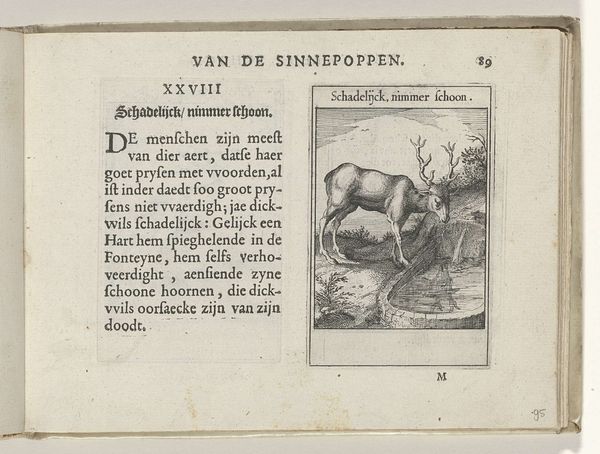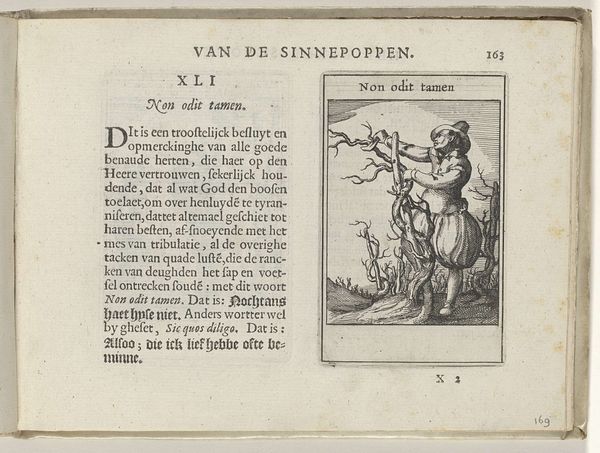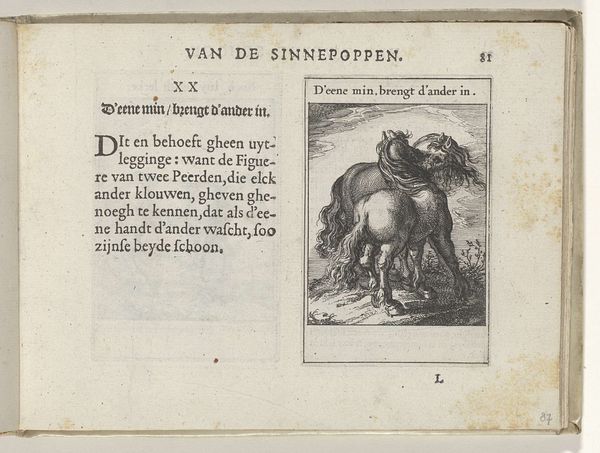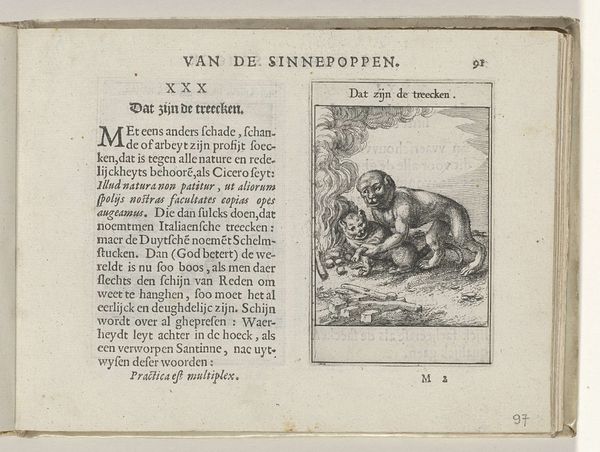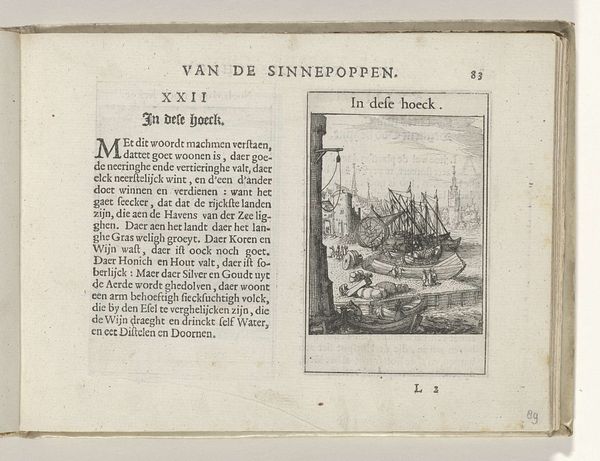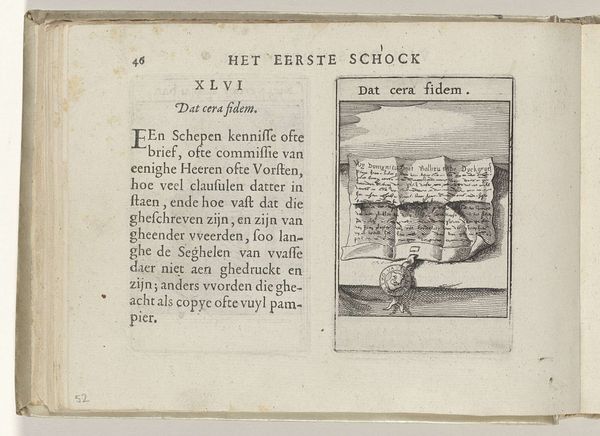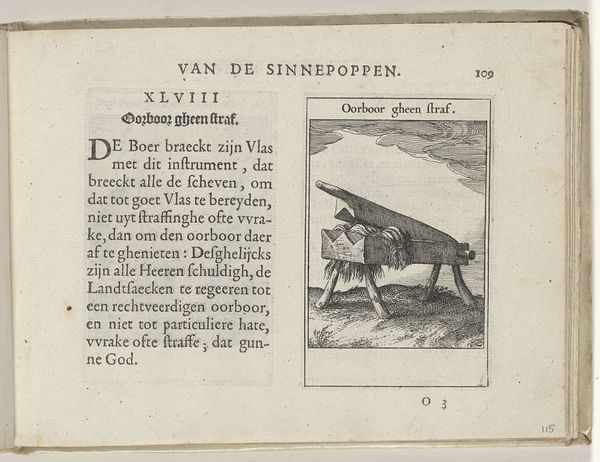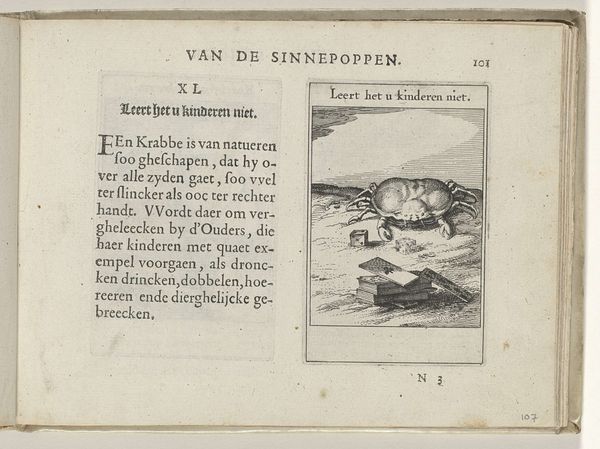
drawing, print, paper, ink, engraving
#
drawing
#
narrative-art
#
baroque
# print
#
paper
#
ink
#
genre-painting
#
engraving
Dimensions: height 137 mm, width 188 mm, height 95 mm, width 60 mm
Copyright: Rijks Museum: Open Domain
Curator: Here in the Rijksmuseum, we're looking at a 1614 engraving by Roemer Visscher entitled, "XXV Laet legghen dat hachjen." It's rendered in ink on paper, a detail from a larger book. What's your first impression? Editor: Immediately, it strikes me as a study in contrasts—rough textures achieved through delicate lines. You have the softness of the dogs' fur juxtaposed with the hedgehog's prickles, all etched meticulously onto the page. Curator: It's a moral emblem, really. The image depicts two dogs cautiously circling a hedgehog, wary of its spines. It symbolizes a brave man who remains steadfast and unharmed amidst his enemies. The hedgehog, though small and seemingly vulnerable, uses its natural defenses to ward off attackers. Editor: So the physical properties, the hedgehog's quills, directly translate to a symbolic form of defense. Was there a particular cultural understanding of hedgehogs at this time that would've informed the work's reception? Curator: Absolutely. Hedgehogs were often seen as symbols of resilience and clever self-preservation in 17th-century Dutch culture. They were understood as resourceful creatures, capable of defending themselves against much larger predators. This resonates with the rise of the Dutch Republic and its own fight for independence. Editor: Considering it’s printed in a book, did the dissemination and the physical properties of the paper also speak to a wider accessibility of such ideas, or was this limited to an elite? Curator: It speaks to both. Books of emblems like this were luxury items, but affordable prints allowed even ordinary people to reflect upon these ideas, to participate in the common moral understandings of that era. Editor: I find the direct connection between materiality and message incredibly compelling here, thinking about production processes too. Curator: Indeed, it's a poignant reflection on how even the most unassuming materials or creatures can embody profound strength. Editor: Thanks. Looking at the drawing through this lens allows me to see how artistic material mirrors and shapes our perception. Curator: And, I think we understand better how cultural values and symbolism work through these material objects and become embedded in our shared memory.
Comments
No comments
Be the first to comment and join the conversation on the ultimate creative platform.
